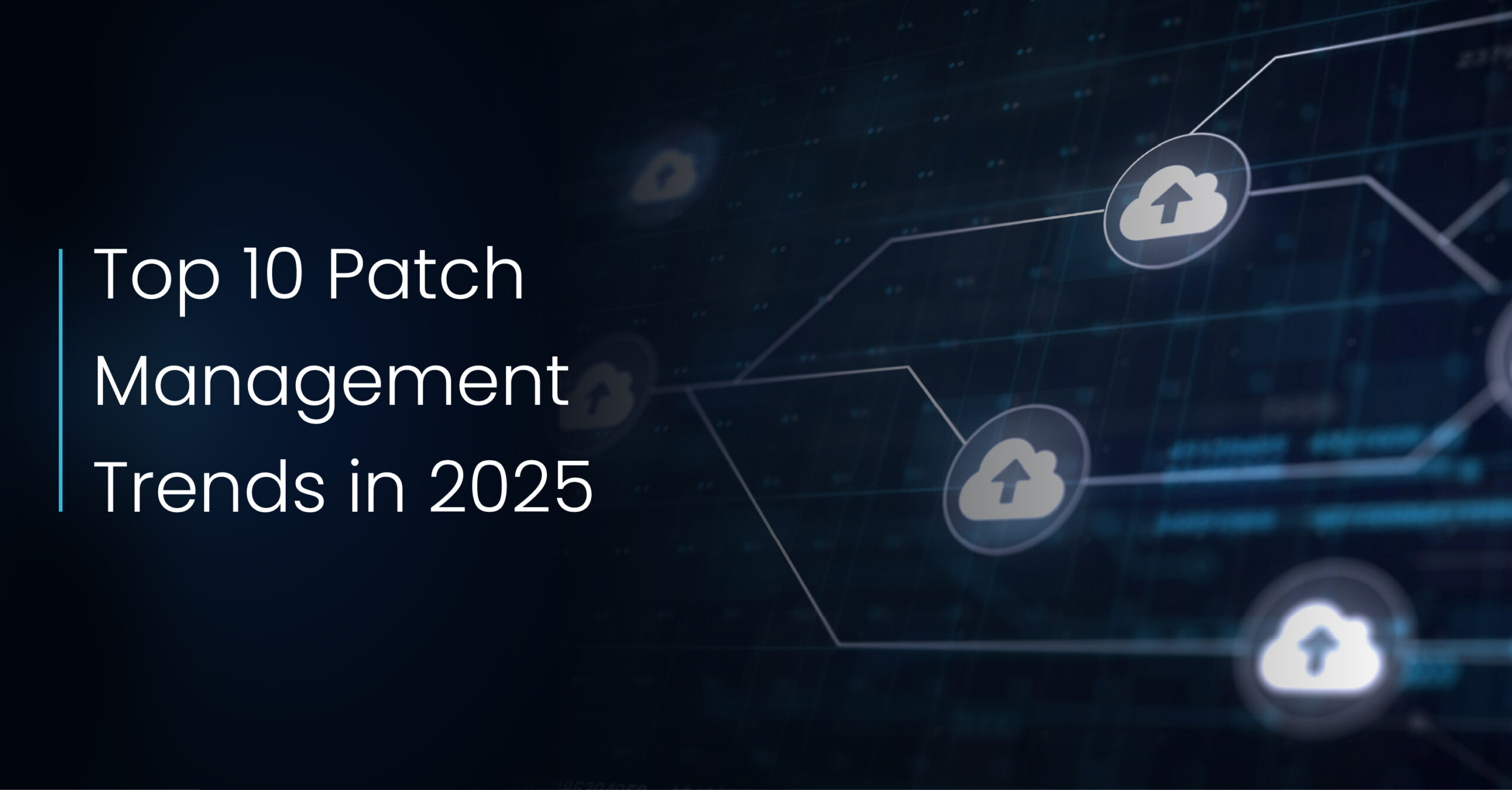Imagine this: You install one of the best security systems and cameras at your place with motion-detecting and automated lock features, thinking you are safe.
But what if a burglar finds a way to get into your house from an unlocked basement or window that the system doesn’t monitor? This is the reality of modern cybersecurity— patching adds a sense of security and control, but cyber threats continue to evolve. These threats can exploit the limitations of patching.
Patching is a proactive security practice in the cyber threat landscape. However, alone, it can fight back the evolving threats, which is a misconception.
As per last year’s stats report, we encountered 30,000+ vulnerabilities, reflecting a constant rise in the speed of cyberattacks. Ransomware, supply chain attacks, zero-day vulnerabilities, and AI-driven threats are making their way through traditional security measures, which is a big concern.
Attackers are exploiting our security systems and weaponizing new vulnerabilities before patching is deployed. This race against the evolving threat landscape highlights the urgent need for a security approach that extends beyond patching.
This blog will discuss the urgent need for a proactive cybersecurity strategy and how shifting from a patch-centric approach to a prevention-focused security model is the need of the hour.
Threat prevention requires a proactive cyber security strategy not just limited to patching but also includes advanced security controls.
The Fatal Flaws of Reactive Security: Why Patching Alone Leaves You Vulnerable
Implementing patching is essential for securing your technology and addressing known vulnerabilities, but is it enough to handle a range of sophisticated threats? Here are a few reasons why patching is not enough for cyber security:
The Zero-Day Gap: Vulnerabilities Before the Fix
A zero-day vulnerability is a software flaw that can inject malicious code into your hardware or software. Generally, attackers use zero-day exploits to bypass security measures, leaving systems open to cybercrime until the software vendor or developer identifies and fixes the problem.
In short, zero-day vulnerabilities exploit the system before a patch is even developed. Organizations must rely on additional security layers to prevent systems from pre-patch exploitation.
The Patching Lag: Time is on the Attacker’s Side
Organizations go through various steps before patch deployment, including running testing cycles, change management processes, and compatibility assessments. Let’s say your patch was available when attackers entered your system.
Still, there can be delays in patch deployment, thus creating an extended attack window for cybercriminals. Even human errors can lead to patching delays.
Attackers constantly monitor vulnerability windows to develop exploits. They know the period between vulnerability disclosure and full patch deployment is the right time to strike.
Human Error: The Unpatchable Vulnerability
Relying entirely on a single cybersecurity strategy to combat evolving cyber threats is a common mistake most organizations make. Even with the best technology, you can be at risk.
For example, human errors or people-centric security systems can be exploited by cybercriminals through security misconfigurations and social engineering practices.
Poorly configured systems and weak access controls are a few common mistakes that patches cannot fix. So, it is essential to incorporate strong authentication mechanisms and run user awareness training programs apart from running a patch management solution.
The Evolving Threat Landscape: Threats Beyond Software Vulnerabilities
Traditional security measures cannot win the evolving threat landscape. Modern cyber threats are no longer limited to software vulnerabilities; attackers now target through phishing scams and supply chains and run insider threats, which are less directly mitigated by patch management systems.
Cybercrime is constantly growing, and we require a multi-layered security approach to fight back. It is time to include threat intelligence, endpoint detection and response (EDR), continuous monitoring, and other security measures to counter emerging threats. Some companies utilize unified endpoint management (UEM) technologies to patch both on-premises and remote devices.
Proactive Security: Building a Fortress Beyond Patches – The Pillars of Prevention
Relying on a reactive approach to security is no longer sufficient for threat prevention. Organizations need to think beyond traditional patching and adopt a proactive security strategy.
Here are the five fundamental pillars of a proactive approach.
1. Risk Assessment & Threat Intelligence: Knowing Your Enemy and Your Weaknesses
You can fight your fears only when you know the problem. Similarly, a solid security foundation will benefit only when you know potential threats and internal weaknesses. Risk assessments and comprehensive threat intelligence help identify and evaluate vulnerabilities.
With the vulnerability assessment process, you can prioritize risks based on their potential impact, perform security posture analysis, and generate real-time insights into emerging threats. With these threat feeds and analysis, organizations can improve overall security resilience and empower security teams to stay ahead of attacker tactics.
2. Continuous Monitoring & Anomaly Detection: Eyes Everywhere, Spotting the Unusual
Another critical pillar of a proactive security approach is continuous monitoring. By employing NLP-powered tools, you can track any suspicious activity done to your networks, systems, and applications in real time.
Further, by incorporating these security monitoring tools, you can perform real-time monitoring by gaining more visibility into unauthorized access attempts and unusual network traffic. It even helps anomaly detection and flagging unusual attacks by running behavioural analysis.
3. Security Automation & AI-Driven Defense: Force Multipliers for Your Security Team
Automating security processes through AI-driven defence mechanisms has become a necessity as cyber criminals are using similar practices to evolve.
By adopting security automation practices, we can prevent loopholes created by human error, streamline security processes such as incident response, and enable IT departments and team members to focus on high-priority threats.
Further, involving machine learning and AI in cybersecurity will help build intelligent response mechanisms and predictive analytics, strengthening the overall cybersecurity framework.
4. Identity and Access Management (IAM): Controlling the Keys to Your Kingdom
Unauthorized access is one of the significant reasons behind security breaches. Hence, implementing identity and access management (IAM) solutions, role-based Access Control (RBAC), and multi-factor authentication (MFA) features are essential to maintain a secure environment.
IAM helps with insider threat prevention. Further, these solutions allow only authorized users to gain permission for their roles.
5. Secure DevOps & Shift-Left Security: Building Security In, Not Bolting It On
Rather than treating security as an afterthought, adopting Secure DevOps practices and implementing Shift-Left Security before the problem escalates is best.
By integrating security in the development lifecycle early, organizations can prevent vulnerabilities initially and reduce the likelihood of security breaches and recovery expenses.
You can further enhance a company’s security posture by incorporating secure coding practices.
Building Your Proactive Security Framework: Practical Steps to Cyber Resilience
Here are a few actionable steps and strategies that an organization must follow to build a proactive security approach:
Crafting a Cyber Resilience Plan: Beyond Prevention to Preparedness
First and foremost, assess your organization’s risk landscape to design a solid cyber resilience plan.
Traditional cybersecurity strategy primarily focuses on threat prevention, while cyber resilience acknowledges that breaches are inevitable and emphasizes security preparedness, disaster recovery, and incident response plans. You must also implement a cyber-resilience plan for business continuity.
Adopting Zero Trust Security: Trust Nothing, Verify Everything
Cybersecurity challenges are increasing, and it has become essential to incorporate such models to avoid threats.
The zero-trust security model involves verifying every single request (even for internal users) for network access.
The model assumes that each attempt can be a potential threat and continuously verifies all users and devices.
Micro-segmentation, continuous authentication, and least privilege access are the core principles of this practice.
By implementing this proactive approach, organizations can reduce the attack surface and improve overall security posture.
Threat Hunting: Actively Seeking Out Hidden Threats
Threat hunting is a proactive cybersecurity approach that detects and mitigates potential risks before it exploit your data or system performance.
The proactive threat detection tool performs manual threat analysis to identify advanced persistent threats (APTs) and indicators of compromise.
It analyzes security logs, endpoint data, etc., to uncover anomalies at an initial stage and prevent breaches.
Refining Incident Response & Recovery Strategies: Practice Makes Perfect
Effective incident response and recovery strategies are highly crucial. Organizations should establish clear roles, responsibilities, and escalation procedures to minimize damage and incident recovery time.
IT teams must perform tabletop exercises and security drills to create clear protocols for incident reporting, regularly test incident response plans, and implement proactive incident management strategies.
Emerging Technologies: The Proactive Security Advantage in the Future
Staying ahead of cybercriminals requires adopting new approaches and emerging technologies. Here are a few advanced technologies that can play a key role in protecting your organization from threats.
AI and Machine Learning in Cyber Defense
AI and machine learning in security are revolutionizing cybersecurity by enabling predictive and adaptive security mechanisms.
These technologies can analyze extensive data, identify real-time anomalies, predict threats, and automate response.
Further, AI-driven threat intelligence helps improve security risk management and security team capabilities to stay ahead of sophisticated cyber adversaries.
Cloud-Native Security & Hybrid Environment Protection:
As businesses increasingly migrate to cloud infrastructures, cloud-native security tools are essential for safeguarding dynamic environments.
By implementing robust security measures, such as encryption, access control, and network monitoring, organizations can help mitigate risks.
Further, you must invest in solutions such as cloud security posture management (CSPM) and zero-trust architectures for hybrid cloud security and data protection across distributed infrastructures.
Secure IoT and Endpoint Protection: Expanding the Proactive Perimeter
To secure IoT security and endpoint devices, robust patch management software and vulnerability management procedures are imperative. The automated patch management process ensures timely patch deployment, mitigating security risks.
Implementing unified endpoint protection solutions helps with real-time monitoring and reduces the surface of an expanded attack.
Regularly performing software updates and investing in patch management tools like Manageengine Patch Manager Plus, Patch Manager, SolarWinds Patch Manager, etc., is also essential to protect against emerging threats.
By integrating proactive endpoint security measures, organizations can fortify their defences, ensuring data security and system integrity in the face of evolving cyber threats, resulting in better user experience.
Best Practices for Continuous Cyber Resilience: An Ongoing Proactive Journey
Cyber resilience is not a one-time effort but an ongoing commitment. Here are a few best practices that smaller businesses and large organizations must follow to strengthen cyber resilience:
Security Awareness Training: Empowering Your Human Firewall
Employees are often the first line of defense against cyber threats. Hence, you must run security awareness training programs for your staff to update them about emerging phishing practices and other threats. They must know how to recognize suspicious links and adhere to security protocols.
By fostering a proactive security culture and employee training, you can reduce human-related security risks to a great extent. Conduct social engineering awareness sessions, guide them on phishing prevention techniques, etc.
Red Team vs. Blue Team Testing: Proactive Offense for Stronger Defense
Proactively identifying security vulnerabilities before attackers exploit them is essential. Organizations must perform Red Team vs.
Blue Team Testing to achieve this goal. The Red Team exercises involve ethical hackers simulating real-world cyberattacks to test an organization’s defenses. Blue Teams, conversely, are tasked with detecting, responding to, and mitigating these attacks.
This proactive security testing is a structured approach that an organization must adopt to improve incident response and fortify security frameworks.
Regular Security Audits & Compliance Checks: Proactive Validation of Your Posture
Routine security audits and patch compliance checks ensure that security controls remain effective and aligned with industry standards such as ISO 27001, SOC 2, and HIPAA.
These evaluations help organizations identify gaps, mitigate risks, and maintain regulatory compliance.
Organizations can safeguard their critical systems and data by scheduling periodic security audits. These audit findings help implement corrective actions and strengthen security policies.
Multi-Layered Defense Strategy (Defense in Depth): Proactive Redundancy
Another key component of a robust cybersecurity approach is employing a multi-layered defense strategy.
It involves implementing multiple layers of security to ensure that if an attacker makes his way through one security measure, other controls remain intact to prevent breaches. This strategy includes endpoint security, access controls, encryption, security monitoring, and network monitoring.
Each layer adds a layer of protection to protect data from threats. The proactive layered security architecture fortifies the organization’s resilience and ability to mitigate potential security breaches effectively.
Conclusion: Embrace Proactive Security – From Reactive Patching to Cyber Resilience Leadership
A systematic patch management process enables businesses to prioritize critical updates. However, relying solely on patching is no longer enough in the evolving digital threat landscape.
A proactive security strategy is imperative to safeguard your organization from buggy patches and ever-growing cyber risks.
By shifting from reactive bug fixes to threat prevention, risk reduction, and enhanced resilience, businesses can strengthen their security posture and stay ahead of attackers.
Further, learning about the key parts of a proactive security plan is vital. Organizations can strengthen their ability to stay safe online using new feature updates, strategic approaches, and technologies.
Stop chasing new or missing patches—it’s time to build a proactive security plan. Embrace a proactive security mindset and take control of your cyber destiny.
Invest in vulnerability management tools like Motadata to conduct security risk assessments and identify vulnerabilities. Further, follow the best practices to improve your defence system threats.
The time for action is now. Invest in the right tools and vulnerability management program to strengthen your cyber resilience and confidently lead.







